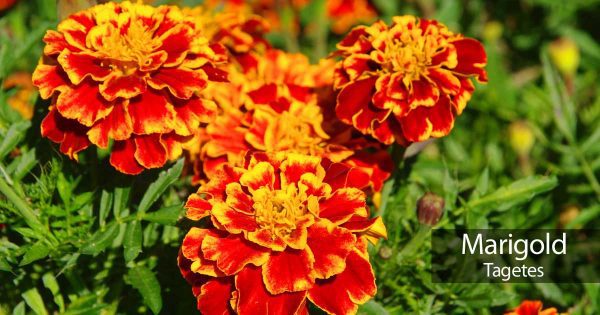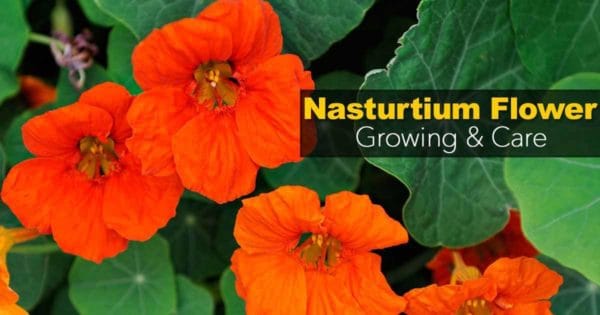Some people believe in tomato companion plants and others think it is some old wives tale.
Growing friendly plants together is said to help growth, produce more flavor and protect fruits and vegetables from insects and pests.
Companion planting has long been a practice of experienced gardeners.
There is also a great deal of scientific documentation pointing to the benefits of selecting plants that do well in each other’s company.
Smart companion planting helps you make the most of the gardening space you have and provides a variety of benefits to your plants.
Proper plant combination in the garden can help deflect pests or insects and improve the flavor of your crops.
Apart from these, some plants shelter tomatoes by being a good host for beneficial insects. In this article, we will discuss some of the best tomato companion plants.
The list of good companions for tomatoes includes: carrots, borage, chives, onions, garlic, mint, leaf lettuce, marigolds, nasturtium, asparagus, basil, peppers, sage, parsley, amaranth, celery, cosmos, cucumber, radishes, and more.
Read on to expand your knowledge about these companion plants and how they benefit your beloved tomato plants. Consider adding them to your vegetable garden to experience their wonderful benefits.
Here’s our list of what to plant with tomatoes and what not to plant with tomatoes.
Food Crops
Lettuce is a good companion plant for tomatoes in many ways, and it only makes sense to grow your leaf lettuce alongside your tomatoes.
Lettuce makes a nice ground cover that acts as a live mulch to hold moisture in the soil and keep the garden soil cool. Lettuce also helps prevent the spread of disease and damage caused to tomato leaves by water splashing up from the soil.
In return, lettuce and other leafy green vegetables under the same family such as spinach and arugula can benefit from the shades of the taller tomato plants. The tomato also keeps the lettuce safe from worms that chew on its leaves.
Also, lettuces should not be assumed to have the same family as cabbages. These two possess different effects when planted with tomato plants.
Related Reading – A collection of Questions and Answers on Growing Tomatoes.
Companion planting radishes and tomatoes in the garden will benefit both plants. Radishes can repel cucumber beetles, flea beetles, and other pests.
Carrots are nice to plant with tomatoes. They do not necessarily provide any benefit for the tomatoes, but it is good to have fresh carrots throughout the growing season.
Plant carrots or whatever crop alongside your tomatoes early on. Once you have exhausted the carrots, plant another at the end of the growing season. Also, you can plant carrots along with the young tomato plants. You can harvest the carrots before the tomato roots start to spread. The combo of carrots and tomatoes makes an ideal solution to increase the yield despite the limited space available.
Companion planting beans with tomatoes creates a harmonious vibe in your garden. Although they do well together, you must keep in mind the space they need while planting. Both also require enough attention for this combination to thrive.
If you are companion planting tomatoes with pole beans, trellis the beans on the north side of the tomatoes. This way, a vegetative wall will form giving pole beans and tomatoes the extra heat that they crave for.
You must also know that beans can produce their own nitrogen. If you plan to apply fertilizers to your tomato plant, remember not to give the same amount to the beans to avoid being over-fertilized.
Other best companion for beans include squash, radishes, celery, cucumbers, rosemary, potatoes, strawberries, beets and more.
Sweet peppers and hot peppers do very well in combination with tomatoes. As with carrots, they do not particularly benefit the tomatoes. But they do grow harmoniously probably because they both belong under the nightshade family. Still, it’s nice to have your own garden full of fresh peppers.
Companion planting peppers and tomatoes in a garden serves as a practical decision. As both begs for the same kind of care, administering their needs such as amount of sunlight, watering, and nutrient distribution will come easily.
Alliums
Onions and their kinfolk are great for cooking and adding to salads and sandwiches. They also work well to help repel Japanese beetles and other types of beetles, and other pests such as aphids, snails and slugs.
Chives taste great in salads and soups. As companion plants, chives also help repel a number of undesirable pests and insects, such as cabbage worms, slugs, aphids, and all manner of beetles. Apart from these, chives also improves the tastes of nearby tomatoes.
Garlic is another member of the allium family that is excellent for adding flavor to many different kinds of foods.
Because of its natural anti-inflammatory and antibiotic properties, it is also a very useful medicinal plant. Like its kinsmen, it does a good job of repelling a wide variety of vegetable garden insects and pests. Specifically, garlic repels spider mites and aphids making it a real life saver for the tomatoes.
Related Reading – Would you like sweeter tomatoes? Serious tomato growers have been using “Epsom salt on tomatoes plants” as a secret sauce for sweeter and tastier tomatoes.
Want more of what grows well with tomatoes?
Herbs As Companion Plants For Tomatoes
Basil and tomatoes are very tasty together, and basil is a delightful, attractive, aromatic addition to your tomato garden. In fact, planting this herb and fruit side-by-side helps enhance the flavor of both.
Basil and tomatoes mature at about the same rate, so it is easy to have plenty of fresh tomatoes and fresh basil to enjoy at the same time. Basil is good for repelling tomato hornworm caterpillars, flies and mosquitoes.
If you like pasta of different sauces, a combo of basil and tomatoes in your garden serves as an ideal move. You just need to get the basil leaves or the tomato fruits from your own garden.
Parsley makes one of the herbs which provides great benefits to its companion plants. Although asparagus appears as the most beneficial, tomatoes will also enjoy the spirit of parsley herbs around them. The scent of parsley attracts hummingbirds and butterflies necessary for pollination and better quality of flowers and fruits.
Borage are nice green herbs that taste somewhat like cucumbers. You can use the herbs or the flowers as an addition to green drinks, soups and salads.
Planted with tomatoes in containers, borage herbs repels tomato hornworms and other insects. UrbanTurnip has an excellent resource on growing vegetables in containers here.
Sage is a deeply scented herb that is excellent for cooking and in preparing flavored vinegars, dressing, gravy, etc. It repels a wide variety of garden pests including those aiming for an early tomato reaping making it a good companion for tomatoes.
Related Reading – Have you ever wondered Why Tomatoes Crack? This article explains it!
Want to know what to plant next to tomatoes?
Flowers
 Marigolds are excellent at repelling several different varieties of garden pests. The French marigold’s cheery presence in your garden produces a substance (alpha–terthienyl) that repels nematodes to prevent or rid the soil of root-knot nematodes.
Marigolds are excellent at repelling several different varieties of garden pests. The French marigold’s cheery presence in your garden produces a substance (alpha–terthienyl) that repels nematodes to prevent or rid the soil of root-knot nematodes.
In fact, French Marigolds produce this substance in such abundance that it protects the soil for years, even if the marigolds are gone. Apart from nematodes, the pungent smell of marigolds get rids of pests such as tomato hornworms, thrips, aphids, and even rabbits!
 Calendula plant is similar to Marigold in appearance; however, it does not repel pests or insects. It is a medicinal plant that can be used to create soothing homemade salves, balms and lotions.
Calendula plant is similar to Marigold in appearance; however, it does not repel pests or insects. It is a medicinal plant that can be used to create soothing homemade salves, balms and lotions.
It has very powerful anti-inflammatory properties that help with skin rashes and irritation and support quick healing of minor injuries.
The marigolds’ leaves and flowers are edible and make a good ingredient in a salad served with tomatoes.
 Nasturtiums have lovely yellow and orange flowers that are edible. The leaves of the nasturtium are also edible. Your vegetable garden can get many benefits if you planted this together with some of your crops such as tomatoes, peas, beans, cabbage and leaf lettuce.
Nasturtiums have lovely yellow and orange flowers that are edible. The leaves of the nasturtium are also edible. Your vegetable garden can get many benefits if you planted this together with some of your crops such as tomatoes, peas, beans, cabbage and leaf lettuce.
Nasturtium makes a nice addition to salads. The nasturtium plant is known for repelling a wide variety of pests in the garden. This long list of pests to repel includes: squash bugs, beetles, aphids, spider mites, squash bugs, white flies, while at the same time, keeping fungal diseases in control. Plant nasturtium seeds during early spring in a moist, well-drained soil in your garden to keep it growing and alive.
Asparagus or garden asparagus, considered as a flowering perennial plant comes as spring vegetables that make a good companion for the tomato plant. The asparagus repels nematodes while the tomato repels asparagus beetles. This combo of asparagus and tomatoes works great as they don’t only drive away pests but both plants keep the land exclusive for them alone by preventing the growth of weeds. Also, asparagus make a great addition in salad and other dishes with tomatoes as one of the ingredients.
The above are great companion planting with tomatoes.
Make The Most Of Your Tomato Garden
Companion planting can be beneficial to your tomato plants and separately beneficial to you.
Making the most of your growing space will help you to reap a better and more abundant harvest.
Apart from these, correct companion planting may attract beneficial insects into your garden that feed on pests such as:
- Flea beetles
- Asparagus beetles
- Japanese beetles and Grubs
- Cucumber beetles
- Bean weevils
- Pea weevils
- Aphids – More on How To Kill Aphids Naturally
- Tetranychus urticae – Spider mites
… and more
All of the plants mentioned here are very easy to grow, but you will surely wish to venture forth and explore other types as you become more and more experienced with good companion planting.
You’ve probably heard the term “in sync” used when things are running smoothly. One tool used in a successful garden and especially an organic one is what is known as “companion planting.”
It’s a smart “planting tool” to keep things running “in sync” in the garden. Planting vegetables which play well together.
Bad Companion Plants For Tomatoes
If you disregard the amazing benefits of companion planting, at least know which vegetables, crops, or plants can wreak havoc and potentially harm your tomato plants instead of protecting it. This group of bad companion plants includes cabbage (Brassica) or anything from the cabbage family, corn, dill, fennel, eggplants, and walnuts.
Cabbage may seem to belong from the same family as leaf lettuce, which works as a good companion plant for the tomatoes. However, cabbages do the exact opposite. Cabbage goes under a different family of cruciferous vegetables, Brassica or cabbage family. On the other hand, leaf lettuce falls under the category of leafy greens with arugula and spinach.
Under the same cabbage family, these members are not suitable with tomatoes: broccoli, Brussel sprouts, kale, cauliflower, rutabaga, turnip, and kohlrabi. Companion planting cabbage with tomatoes and these vegetables won’t do any good however, there exist some plants that love cabbages such as: beets, celery, onions, bush beans, marigold, nasturtium and a few strong herbs.
If you already planted cabbage and tomatoes together in your garden, avoid the latter from severely shading the cabbages. They should stay a few feet away to avoid the tomato roots from reaching the cabbage. Apart from this, cabbages get most benefits from tomatoes. The tomato plant can drive away moth larvae and caterpillars that feed on the leaves of cabbages.
Corn planted with tomatoes spells a huge disaster. When it comes to pests, corn worms are no different to what gardeners call the tomato hornworm. As it attracts more of these tomato hornworm, putting the two plants together in one setting will kill them two times faster.
Although the young dills may help protect the tomato plant from tomato hornworms, planting a mature dill nearby inhibits the growth of the tomato. Make sure to keep a good distance between the seed of dills and tomatoes in your garden when planting.
Eggplants and potatoes do not work good with the tomato plant if these plants sit very close to each other. Early and late blight will accumulate in the garden soil making it an unhealthy soil for different plants in the years to come.
Apart from the dill plant, fennel also stunts the growth of the tomato plant. On the other hand, walnuts promote the same effect with its allelopathic element experts call juglone.
This chemical causes walnut wilt, a disease making tomatoes sick, causing it to wilt and die. Other plants containing juglone includes English walnut, Persian walnut, black walnut, hickory, pecan, and butternut.


